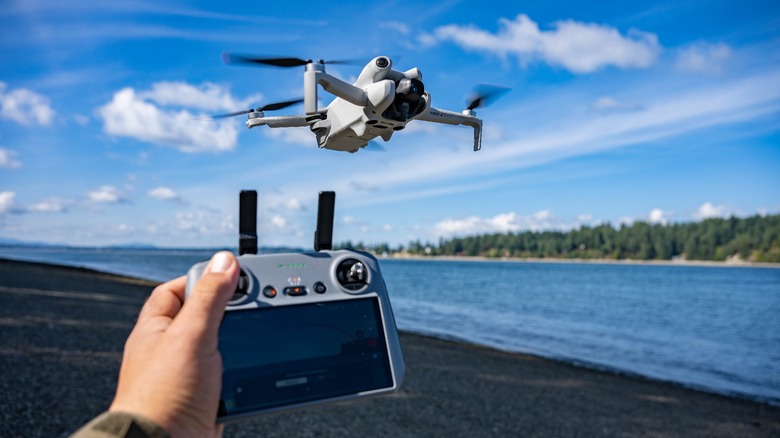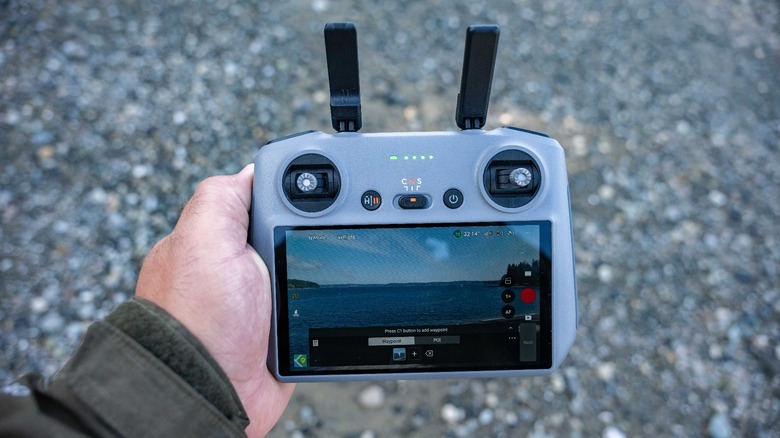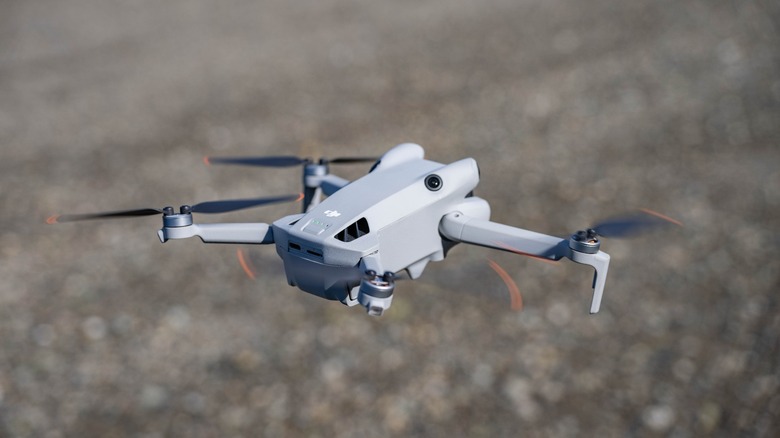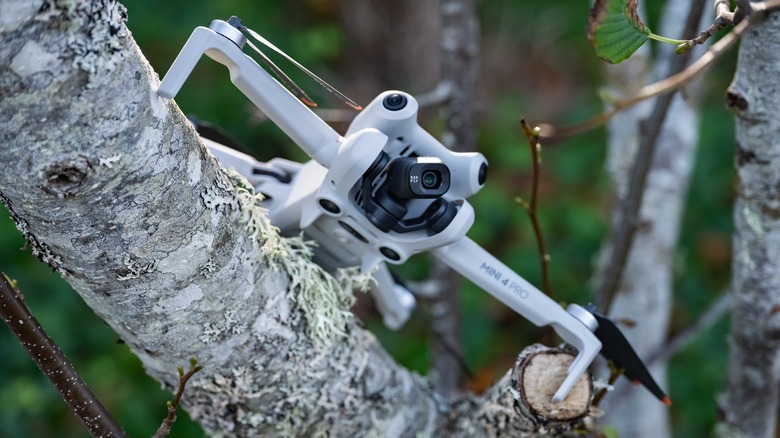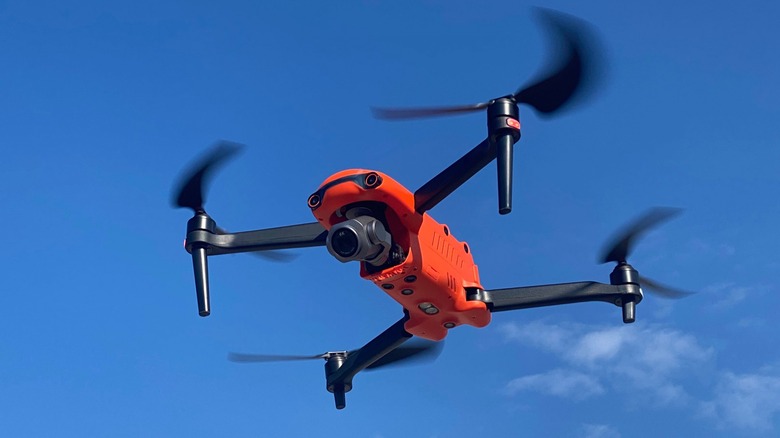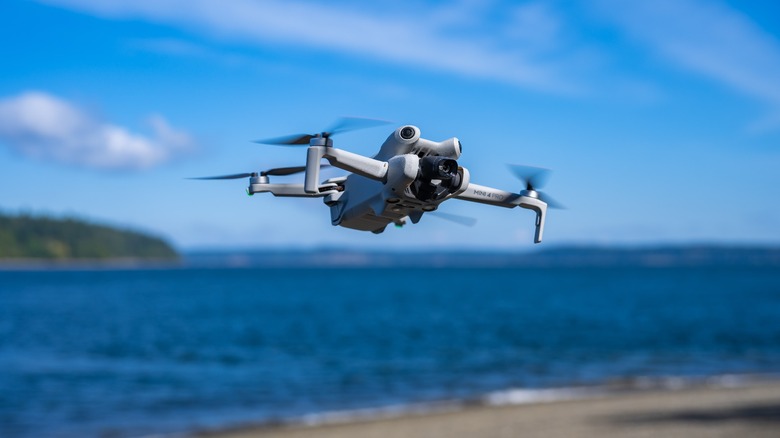DJI Mini 4 Pro Waypoint Flight Explained: How It Works (And Why Its A Gamechanger)
The new DJI Mini 4 Pro has a lot to recommend it, including some attractive upgrades over its predecessor. These include upgraded obstacle avoidance and subject tracking, an optional interchangeable wide-angle lens, and upgraded slow motion video capabilities. However, one of the most interesting new features of the Mini 4 Pro is that it has acquired the ability to carry out automated waypoint flight, something previously only available in much more expensive drones such as the DJI Mavic 3 Pro. With that said, what is a waypoint flight?
Waypoints are points set on a map using GPS coordinates and other data. Once set, the drone flies automatically between these points. Using waypoints, it's possible to perfectly replicate video shoots and create spectacular transitions from day to night, season to season, or any time you desire to show changing conditions at a certain location.
A good example of how you'd use this capability would be if you shot a scene in a film taking place during the day, and needed a visual example to connect it to a scene taking place at night. You could set the drone to film a route observing a house during the day and record a waypoint route, then repeat the flight and film at dusk when the lights are on.
DJI provided SlashGear with a sample of the Mini 4 Pro to test and review.
Setting up a waypoint flight
To access waypoint flight, tap the squiggly line on the left-hand side of the screen when in the camera view of the DJI fly app on your phone or controller screen. To set parameters, tap the meatballs symbol (three little dots). These parameters include the global speed, which sets the default speed of the entire waypoint route; whether the aircraft hovers, returns to home, lands, or returns to start at the end of flight or when the signal is lost; finally, the start point for the waypoint flight may also be set here as well.
You have the option of setting waypoints on a map before the flight, or setting them in flight. These can be placed either using a button (Fn or C1, depending on your controller), or with the plus symbol on the operation panel with your touchscreen, or by switching to map view and tapping on the map. If you want to use the map to plan a waypoint flight it's important to connect the device to the internet and download the map for that location. It's best to fly the route yourself and create it while in the air. This way you have a better idea of the actual terrain.
You can also adjust granular settings for your waypoints and route, including camera action, altitude, speed, heading, gimbal tilt, and zoom. Otherwise, these factors are handled automatically by the drone. You can also set points of interest along your route.
Performing, saving, and transferring waypoint flights
Once you have set your waypoints, it's time to take to the skies. This is as simple as hitting the "go" button, but there are some things to keep in mind before you do. It's vital to watch your drone perform the flight, as you may need to hit the pause button and stop it if something goes awry. This is particularly a concern on the first flight, just in case there were any errors in your waypoint planning or in the drone's interpretation of your commands. On subsequent flights, it's also important to maintain awareness of the drone's flight and keep it within your visual line of sight, as something may occur which requires you to cut in with manual controls.
Waypoints and settings are automatically saved during the planning process, though you can also manually save your work. By tapping on the icon on the left side of the waypoints panel, you can access your waypoint projects and save, edit, or delete them. Waypoints can be accessed and transferred from the app by connecting the controller or phone you fly with and going to Android/data/dji.go.v5/files/waypoint on Android or FILES/DJI Fly/wayline_mission/ on IOS. Here you'll find your flights in files labeled with long strings of characters. Simply copy these files wherever you want to transfer them.
Planning ahead to record breathtaking transitions
It takes some forethought to make the best use of the Mini 4 Pro. If you're filming a large town or city, a day to night transition can be particularly striking, or on the coast you might want to film the changing tides. During our time testing Mini 4 Pro however, we did most of our filming in an inland rural area where dramatic changes are typically more seasonal, and thus require more patience to record. We settled instead on a transition from our first waypoint flight which took place on a sunny afternoon, to a morning scene on a day in between storms. The change in lighting is interesting, and by applying dissolve transition effects in Adobe Premiere Pro we were able to have clouds materialize and replace the previously clear sky.
The key is to appraise the location you want to film for what will provide the most dramatic changes over time. Our choice was to focus on deciduous trees which will soon change color, then lose their leaves completely. The sky is always a good subject to show change, as are bodies of water, and of course this would be a great way to show progress at a construction site, or perhaps the painting of a large mural.
It's also very important in the planning process to make sure that you're following all rules and regulations. Getting the necessary permissions can be particularly tricky in urban areas.
Limitations of waypoints in the DJI Mini 4 Pro
One issue we ran into when recording subsequent waypoint flights with the Mini 4 Pro was that it didn't complete the pre-programmed movements exactly the same with each flight. Some shots lined up nearly perfectly, while others were slightly off, which messed up some of our transitions, and this can be seen in the above video filmed using waypoint flight. After careful examination, it appears that if you want really reliable shot repetition, it's important to be somewhat conservative with the movement of the drone. Attempting to program a more energetic and erratic flightpath resulted in inconsistent results.
Be careful to set your waypoints so that the Mini 4 Pro doesn't encounter any obstacles enroute – otherwise, the obstacle avoidance system will kick in and cancel the waypoint flight. You need to set waypoints so that the drone goes around or over obstacles.
It's also worth noting that the process and interface for setting and managing waypoint flights is kind of awkward and unintuitive. There's definitely a learning curve, and it takes some practice to get used to the system.
Other drones and apps with waypoint flight
Waypoints aren't a feature exclusive to the DJI Mini 4 Pro. They're also available on the DJI Air 3 and the DJI Mavic 3 (as well as the classic and pro versions), among others. Older DJI drones, such as the Mavic 2, can be used with the third party app Litchi in order to make use of waypoint flight.
Beyond DJI, there aren't a lot of drones comparable to the Mini 4 Pro on the market. The Autel EVO II presents one of the few competitive alternatives, though it's a large drone which doesn't have the many advantages of the Mini 4 Pro that are derived from its light weight and portable size.
While there are certainly numerous options for taking advantage of the creative possibilities enabled by waypoint flight, the Mini 4 Pro is unique in that it's the smallest and lightest drone to feature this functionality. The previous DJI Mini 3 Pro could only use waypoints while filming in timelapse mode, and so was very limited in this regard.
Conclusion
Waypoint flight in the DJI Mini 4 Pro is a real game changer thanks to the miniscule size and featherlight 249 gram weight, as well as the relatively affordable price tag. While the Mavic 3 Pro or Classic will deliver better image quality, there's a huge advantage for the Mini 4 Pro when it comes to carrying it with you, as it's just so much easier to lug around. Also, that light weight makes the Mini 4 Pro easier to fly, as drones 249 grams are less strictly regulated than larger drones. Having native, fully functional waypoint flight in such a small and light drone is a new and unique opportunity that opens up an exciting world of photography and filmmaking.
Utilizing waypoint flight, many different types of creators can make great use of the Mini 4 Pro. Filmmakers can tie scenes together with exciting, professional transitions without having to spend thousands of dollars on high end equipment, a photographer could create a series of photographs depicting the changing seasons, and hobbyist videographers can create really beautiful content for YouTube, Instagram, or other platforms.
Waypoint flights require planning, patience, and dedication, but the payoff are visually stunning shots that can elevate your creativity. They are a great method to really explore our changing world, and document the complexity of nature and human civilization as it evolves from day to day or season to season.
